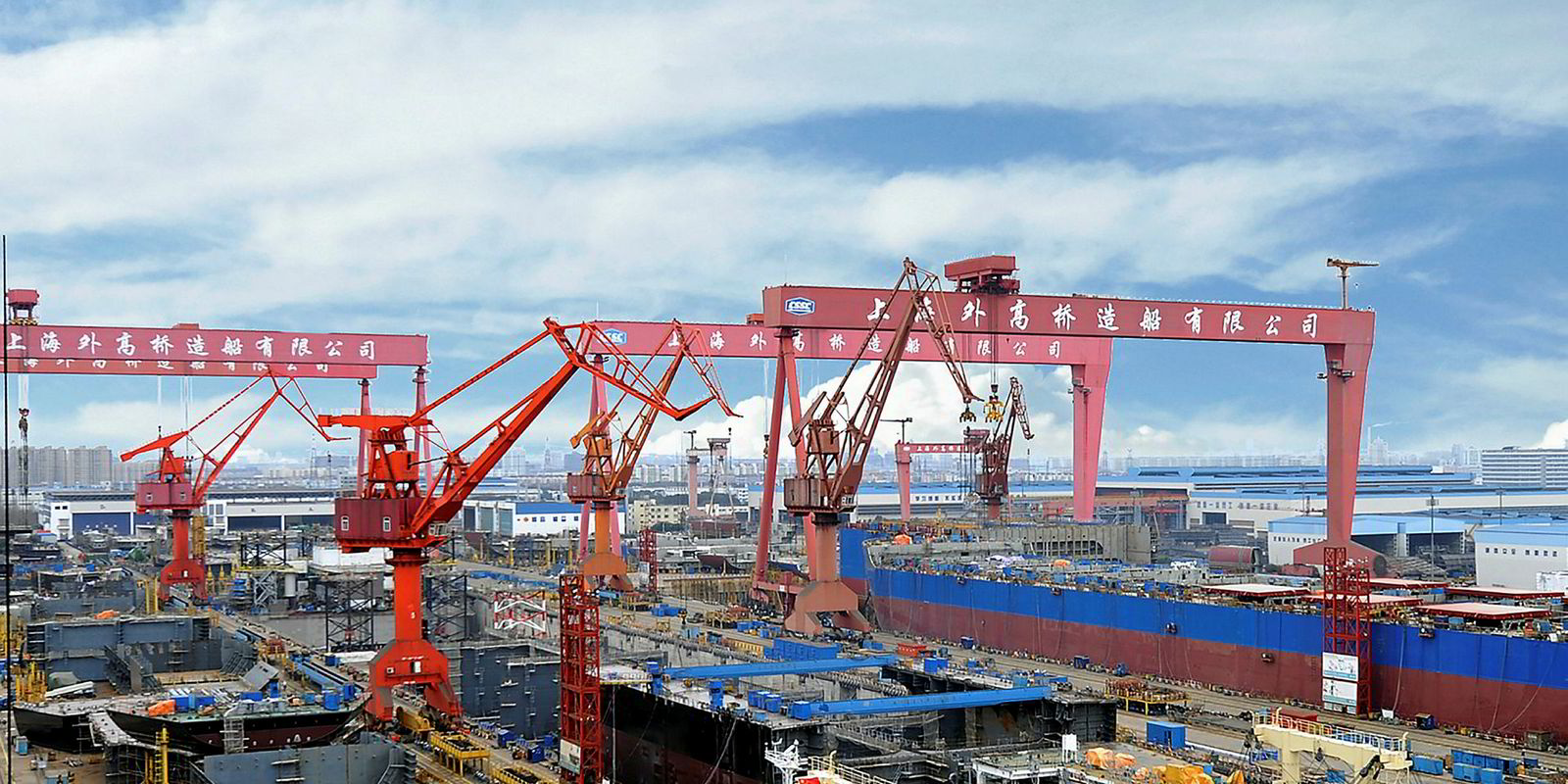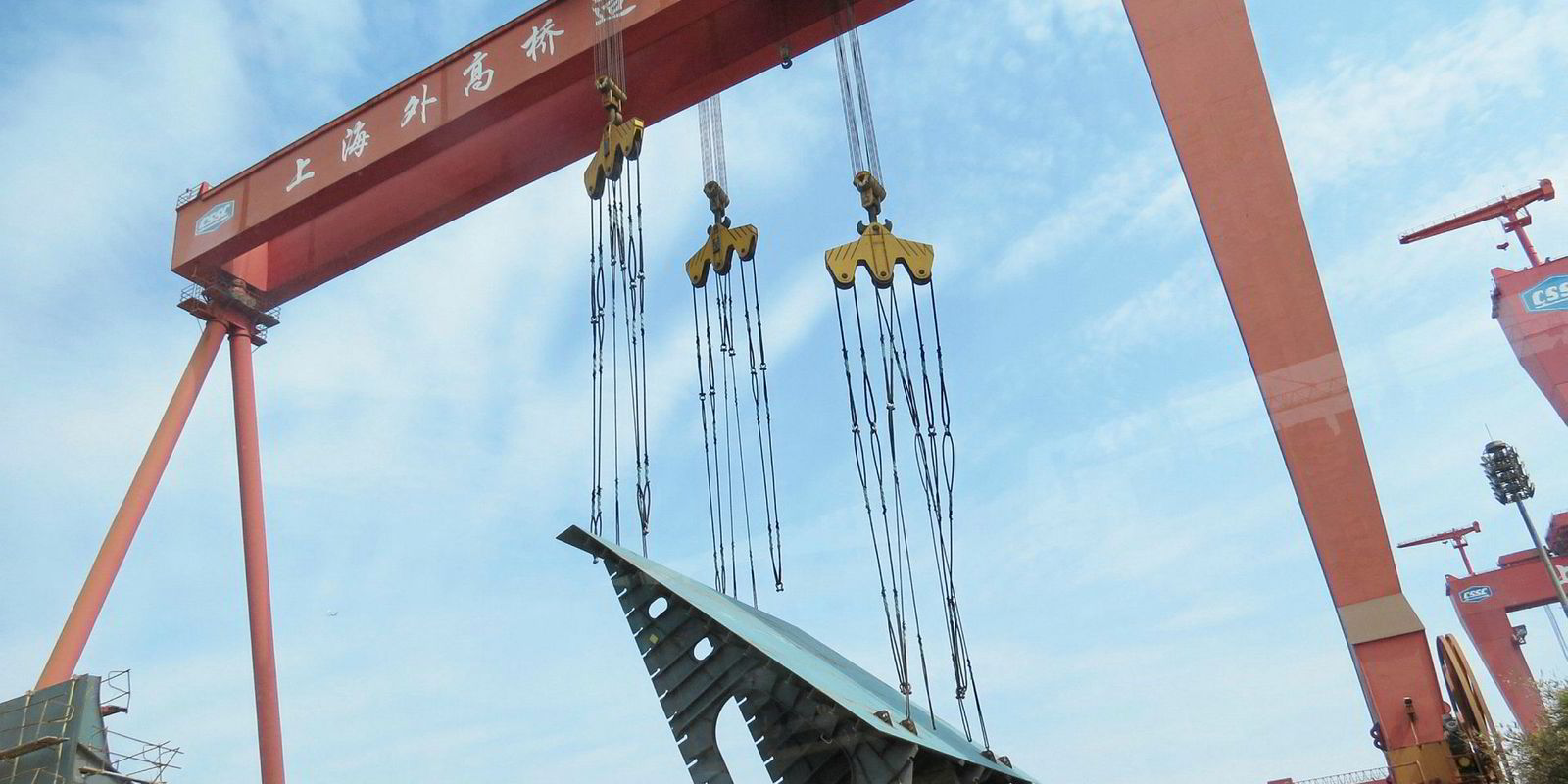Pantheon Tankers is in advanced talks to order up to four aframaxes at Shanghai Waigaoqiao Shipbuilding (SWS), in what would be its first newbuildings in China.
The Greek shipowner declined to confirm reports that it has signed a letter of intent, and the shipyard could not be reached for comment.
The order would be for two firm and two optional vessels at SWS at about $44.8m per ship. No delivery date has been suggested.
However other sources suggest the price of the uncoated vessels, based on recent similar deals, is more likely to be closer to $46m.
According to records, Pantheon has only ordered or purchased ships built at South Korean or Japanese yards.
SWS has no aframax tankers under construction, according to Clarksons. SWS currently has no aframax tankers under construction, according to Clarksons. However, the yard has previously built aframaxes for several major owners, such as Ocean Tankers.
Alpha Bulkers, which is affiliated to Pantheon, has Chinese-built vessels in its fleet, including several constructed by SWS.
Pantheon, which is controlled by Anna Angelicoussi-Kanellakis, is already in the middle of a large-scale newbuilding expansion programme.
Since August 2018, it has taken delivery of two new aframaxes from Namura Shipbuilding.
According to its website, it is awaiting 10 more tankers: two VLCCs from DSME in 2019 and 2020 respectively; two aframaxes from Hanjin Heavy Industries & Construction Philippines (HHIC-Phil) in 2019, which is now under bankruptcy protection; and six MR 2 tankers from STX Offshore & Shipbuilding, all in 2019.
At the same time, the company is selling some older tonnage.
Last month, Pantheon reportedly raised close to $45m from the sale of the 318,300-dwt Sea Lynx (built 2004) and the 105,100-dwt Astro Sculptor (built 2003).
Supply-side dynamics look promising for ordering aframaxes.
According to Clarksons, 76 such ships have been ordered, representing 7.7% of the active aframax fleet, compared with 8.6% for suezmaxes and 12.9% for VLCCs.
Ordering of aframaxes has significantly declined since October last year, when the ratio of such tonnage ordered to tonnage in the water stood at 12%.
Irene Ang contributed to this story.




